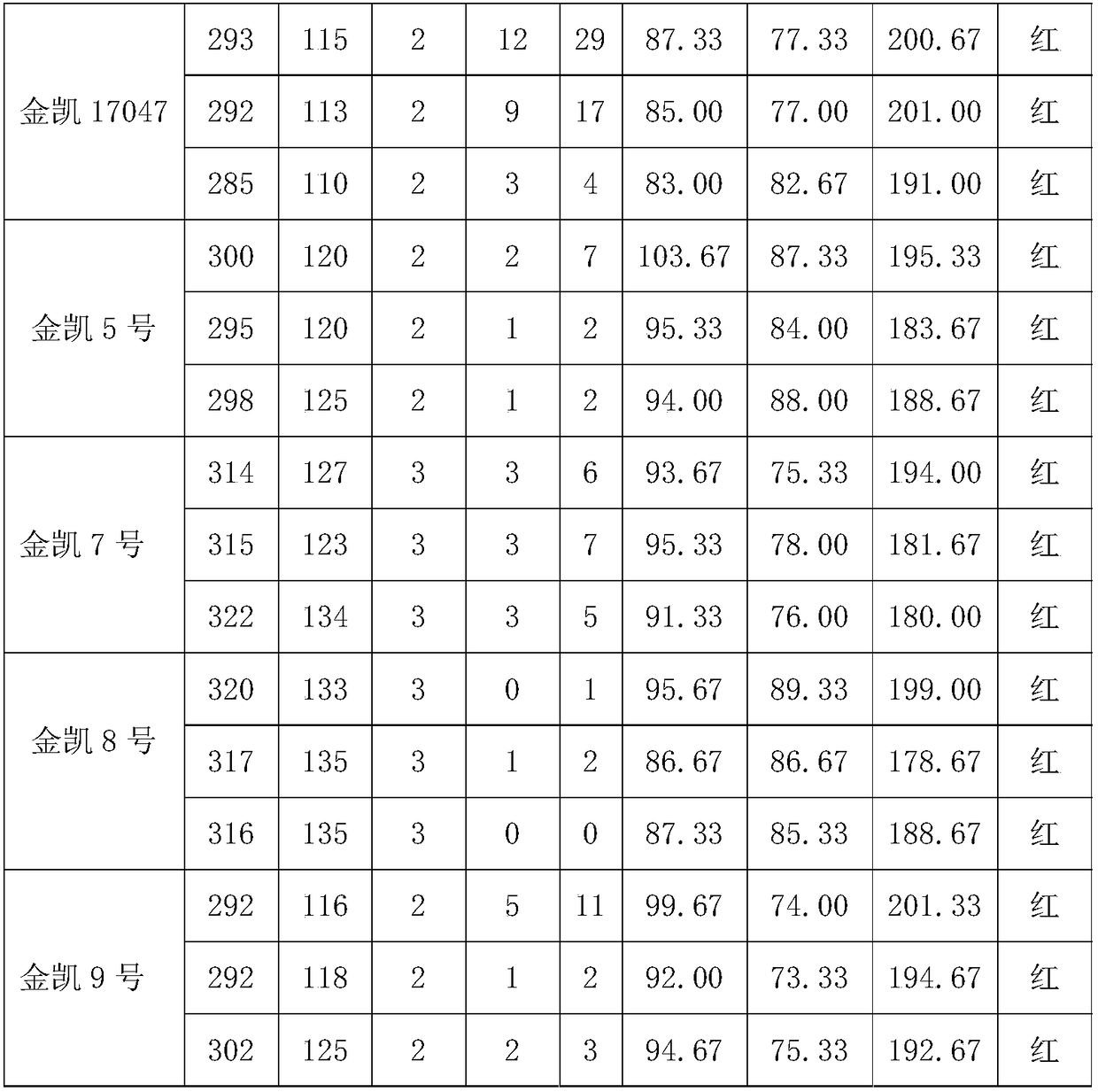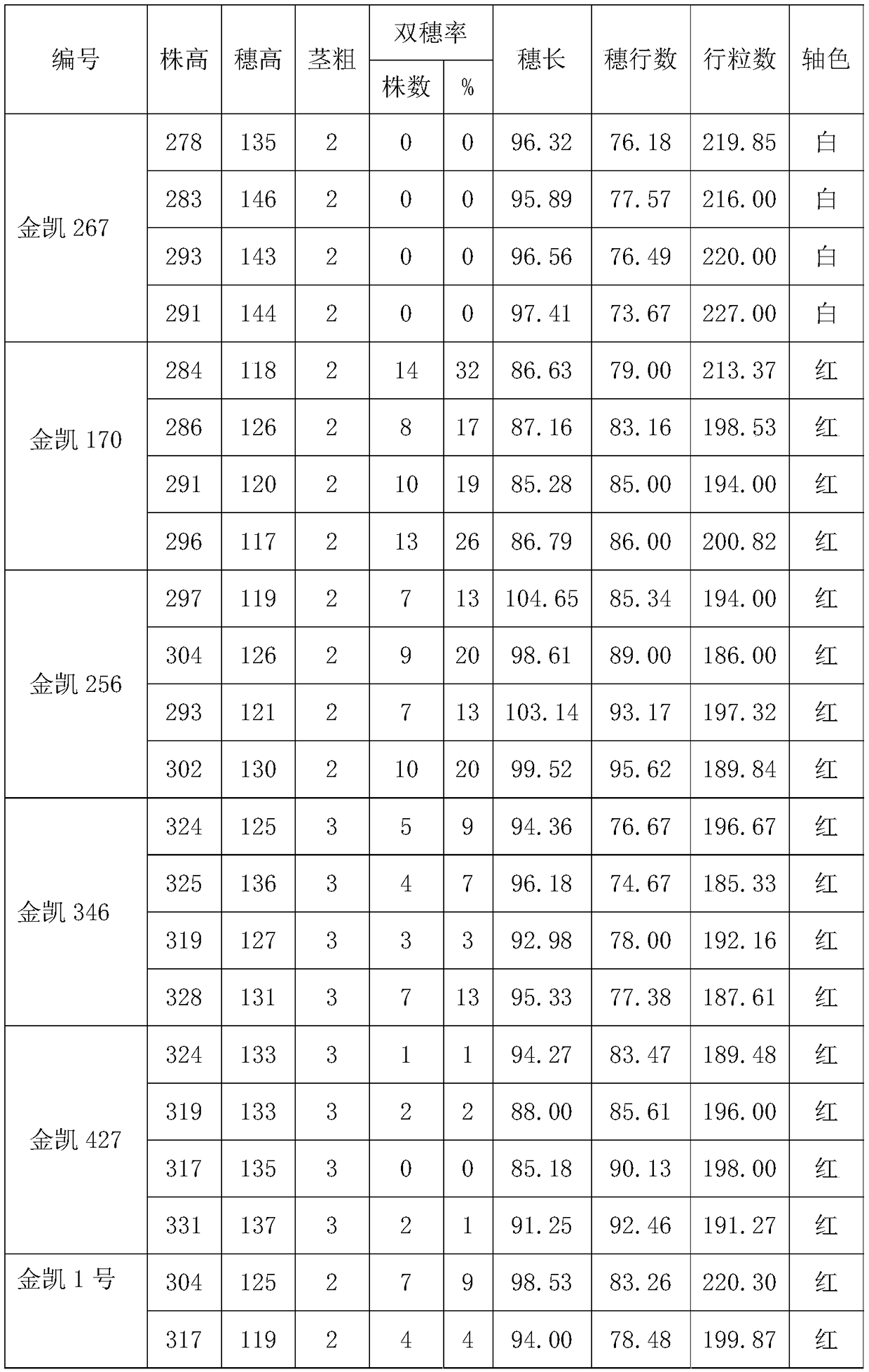Planting method for identifying new corn strains and identification method for new corn strains
A technology of planting method and identification method, which is applied in the identification of new corn strains and the planting field of identification of new corn strains, can solve the problems of increased breeding costs, large land occupation, and complex genetics, so as to ensure integrity and guarantee Accuracy, the effect of guaranteed randomness
- Summary
- Abstract
- Description
- Claims
- Application Information
AI Technical Summary
Problems solved by technology
Method used
Image
Examples
Embodiment 1
[0050] The planting method for identifying new corn strains provided in this example includes: classifying all corn strains to be identified into early-maturing, mid-maturing, and late-maturing categories according to the number of parental leaves. In each class of maize lines to be identified, 7 lines were selected as the seeds for planting and numbered. The selected planting seeds are sorted according to the sowing rate of 2 seeds per hole, and the sorted planting seeds are put into seed bags and numbered. After sorting, the place where the seeds are planted is pre-designed at a planting density of 4800 plants / mu and a plant spacing of 25 cm on a plot of 20 meters * 30 meters. The number of seedling holes designed is 5 holes.
[0051] Then plow the planting land and fertilize for the first time at the same time, and the first fertilization is every 1000m 2 Apply 7200kg of decomposed sheep manure, 37kg of superphosphate, 17kg of urea, and 16kg of potassium sulfate. After s...
Embodiment 2
[0059] The planting method for identification of new corn strains provided in this example is basically the same as the planting method for identification of new corn lines provided in Example 1, except that the operating conditions are changed.
[0060] The seeds selected for planting in this embodiment are 7 corn lines to be identified at intervals, the number of seedling holes is 6, and each hole is 3 seeds for planting. The plot size is 18m*28m, the planting density is 4900 plants / mu, and the plant spacing is 23cm. The first fertilization is every 1000m 2 Apply 7500kg of decomposed sheep manure, 35kg of superphosphate, 12kg of urea, and 12kg of potassium sulfate. The second fertilization is every 1000m 2 Apply 75kg of diammonium phosphate and 80kg of urea. The irrigation volume is 1200m 3 / m 2 . From the jointing stage to the bell mouth stage at every 1000m 2 Topdressing 380kg of urea and 75kg of potassium sulfate; topdressing urea 220kg per 1000m2 after the silk-sp...
Embodiment 3
[0065]The planting method for identification of new corn strains provided in this example is basically the same as the planting method for identification of new corn lines provided in Example 1, except that the operating conditions are changed.
[0066] The planting seeds selected in this embodiment are 8 corn lines to be identified at intervals, the number of seedling holes is 7, and each hole is 2 planting seeds. The plot size is 22m*32m, the planting density is 5200 plants / mu, and the plant spacing is 22cm. The first fertilization is every 1000m 2 Apply 7800kg of decomposed sheep manure, 40kg of superphosphate, 18kg of urea, and 14kg of potassium sulfate. The second fertilization is every 1000m 2 Apply 80kg of diammonium phosphate and 75kg of urea. The irrigation volume is 1000m 3 / m 2 . From the jointing stage to the bell mouth stage at every 1000m 2 Ground topdressing urea 376kg and potassium sulfate 80kg; 2 Ground topdressing urea 250kg. After the seedlings matu...
PUM
 Login to View More
Login to View More Abstract
Description
Claims
Application Information
 Login to View More
Login to View More - R&D
- Intellectual Property
- Life Sciences
- Materials
- Tech Scout
- Unparalleled Data Quality
- Higher Quality Content
- 60% Fewer Hallucinations
Browse by: Latest US Patents, China's latest patents, Technical Efficacy Thesaurus, Application Domain, Technology Topic, Popular Technical Reports.
© 2025 PatSnap. All rights reserved.Legal|Privacy policy|Modern Slavery Act Transparency Statement|Sitemap|About US| Contact US: help@patsnap.com



